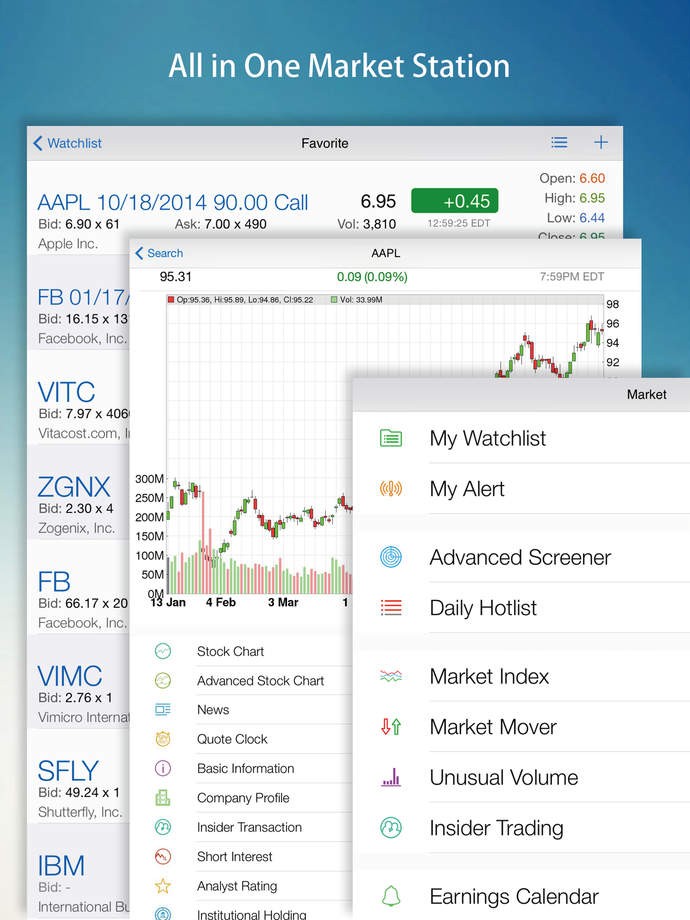The Complete Option Report Extensive Stock Options Information
Post on: 20 Июль, 2015 No Comment

ABOUT US
How to Use LEAP Options for Long-Term Profits
by Jeff Carter
When most people think of options they think of risk and speculation. If you trade in and out of short-term options that is an accurate assessment.
But with a long-term LEAP call option, which can last for up to two and a half years before expiring, you are investing, not trading.
With that in mind it is entirely possible to create a conservative, growth-and-income portfolio.
The biggest advantage of a LEAP is its low cost compared to the cost of the stock. When you are investing in a LEAP, that is how you should think — its cost relative to the cost of the stock, not relative to the cost of short-term options.
With a LEAP you have a much longer time for a stock to make its move — years, versus the months you get with standard options.
And a lot can happen in a couple of years. The market can go from bullish to bearish and back to bullish again.
Or a company can go through a complete product cycle or restructuring and still have time for the new results to make an impact on its stock price before your LEAP expires.
In fact, if you have never owned a LEAP, you should seriously consider spending a couple hundred dollars to buy one, even if it is far out of the money and has little chance of profit. Hold this LEAP until expiration.
The experience you gain will be eye-opening. You will see first hand exactly how much happens over two and a half years to a stock and to the market in general.
Regardless how expensive a LEAP might be, you are still paying less than you would if you buy 100 shares of the stock. And because you are paying less, your potential profit is higher.
And at the same time you can collect interest income many times greater than the dividend income you would receive from these stocks.
The purest investment play with a LEAP is to buy one with the most intrinsic, or real value. Time value is for speculators, not investors. When you buy an in-the-money LEAP, you will pay less for time value, and the LEAP is closer to moving almost point for point with the stock price.
For example, we once recommended a Pfizer (PFE) 30 LEAP Call when PFE was at 35 and the LEAP was at 9-7/8. So you could have paid $3,500 to buy 100 shares of the stock, or $988 to control the same 100 shares with the LEAP.
The breakeven stock price for the LEAP is 40 (strike price plus LEAP cost), a 13% gain in the stock. If PFE trades between 36 and 39 prior to expiration in two-and-a-half years you will have a loss with the LEAP and not with the stock.
If PFE is at 42 when the LEAP expires you will have a 19% gain on your stock purchase. With the LEAP you will have a 21% gain, and with a much smaller investment. Looked at in this sense, buying a LEAP is less risky than buying the stock.
And once the stock rises beyond this tie score level the profit potential of the LEAP starts kicking in.
For example, if PFE rises to 45 you will have a 27% stock gain, compared to at least a 50% gain in the LEAP.
Because of the high cost of a LEAP relative to standard options, you can also lose more with a LEAP than with a regular option. But that is not the fault of the LEAP.
The loss is a result of picking the wrong stock. You would have also lost money if you had invested in the stock instead of the LEAP.
How to Supercharge Your Income
When you buy a LEAP you are not eligible to receive dividends from the underlying stock. But you can still use a LEAP to earn income. You do this by putting the money you save by buying a LEAP instead of the stock into a money market fund, and collecting the interest.
Over the life of the LEAP you will earn more income this way than you would from dividends. This strategy also gives you additional downside protection should the stock head south.
Also, when you use a LEAP as a surrogate stock investment you can also use option strategies similar to those you would use with stocks. One of those strategies is to write covered calls.
For example, after you bought the PFE 30 LEAP, you could have also written a PFE Mar 40 Call against the LEAP for a price of 1-3/4, which would have generated an immediate 17% return on the PFE LEAP.
Now, here’s the best part. If the short-term covered call expires out of the money, you can write another short-term call against your LEAP.

If you are able to duplicate your original call-write again, you will have generated $350 of income against your $988 LEAP investment, a 35% return over 8 months.
Plus, your PFE LEAP will still have another 6 months to run, allowing you to write more covered calls.One word of warning — though you are using a LEAP as a surrogate stock, you are not really writing covered calls here.
The technical term for writing short-term options against long-term options is calendar debit spread. The mechanics of exercise and assignment with a calendar spread are different than for a straight covered call.
There is also more risk involved.
For example, if you bought PFE stock at 35 and were assigned the 40 covered call, you would simply sell the stock you already own at 40.
But when you buy a LEAP, you don’t yet own the stock. You have only bought the right to own the stock.
In our example you have bought the right to own PFE at a price of 30. You have paid $988 for this right. If you are assigned the 40 call, you are required to sell 100 shares of PFE at 40.
To do this you would exercise your LEAP to buy the stock at 30, then sell it at 40. This is a 10-point gain. You paid 9.9 points for your LEAP, so your total return is $185, the gain on the stock ($10) plus the amount you received for your covered call ($175).
However, if you write a covered call with a 35 strike price and are assigned you will probably have a loss.
That`s because 35 is less than the breakeven stock price of the LEAP. To remove this risk you should only write covered calls that are above the breakeven stock price for the LEAP, unless the LEAP price has declined significantly and you are simply trying to reduce your loss.
Over the years we have been able to use this buy LEAP, write covered calls strategy to generate enough covered call income to actually lower the net cost of some of our LEAP recommendations to zero, while still garnering gains of more than 200%.
Our twice weekly newsletter The Complete Option Report gives you a rich variety of specific option recommendations including LEAPS. For more about out newsletter click here.
For additional information about LEAPs look at our seminar video course which gives you trading tactics for a dozens of different options strategies click here.
FREE 2 Months subscription to The Complete Option Report with a $200 or more store purchase.














